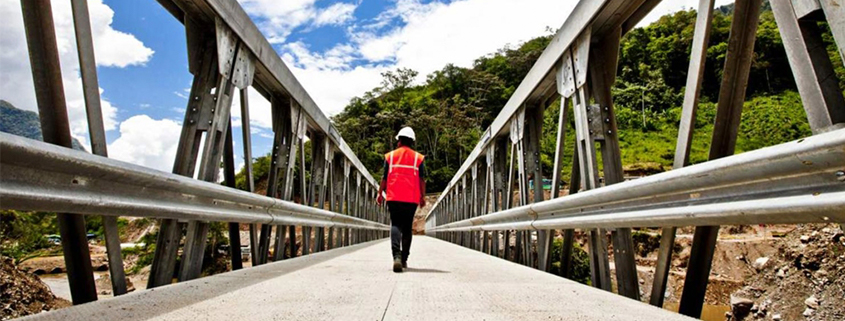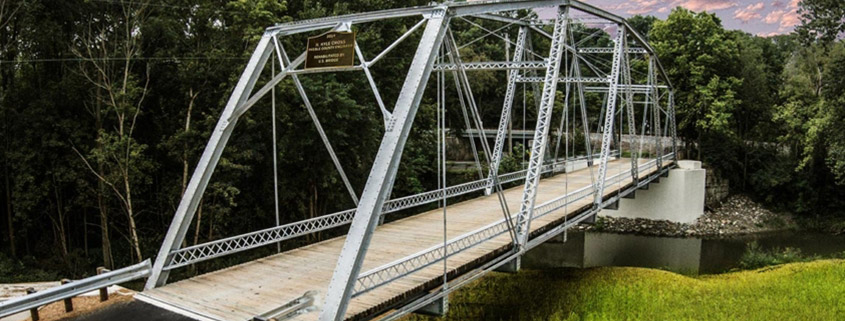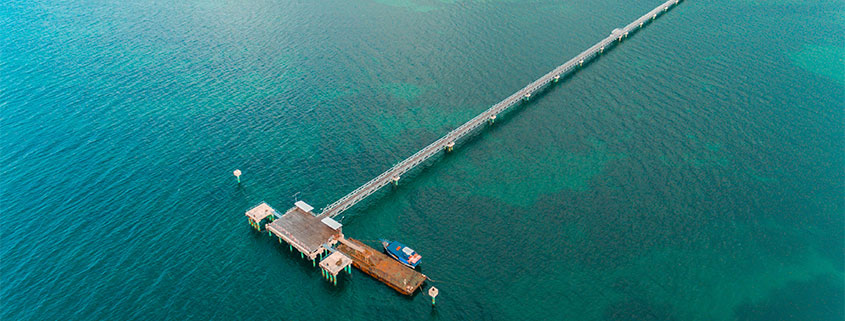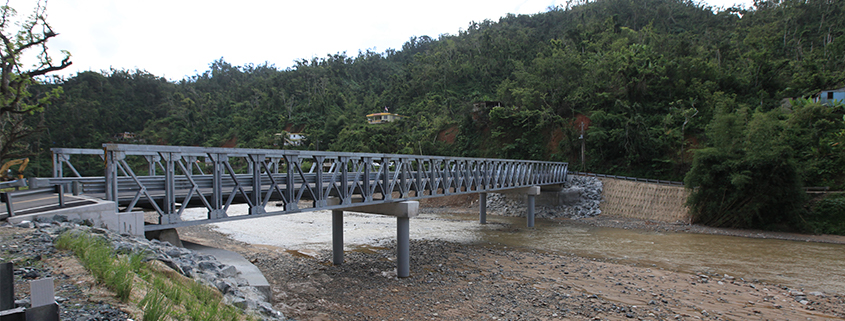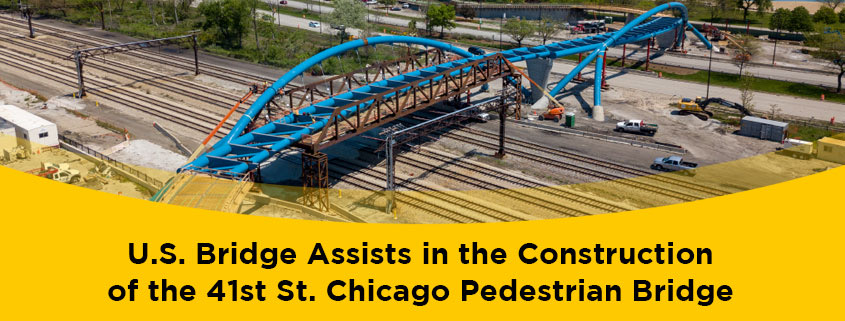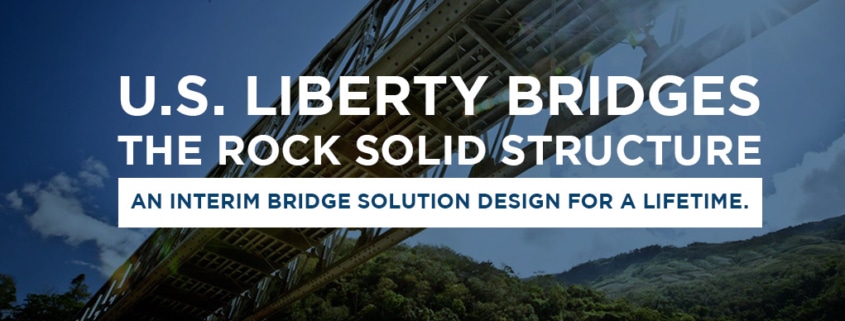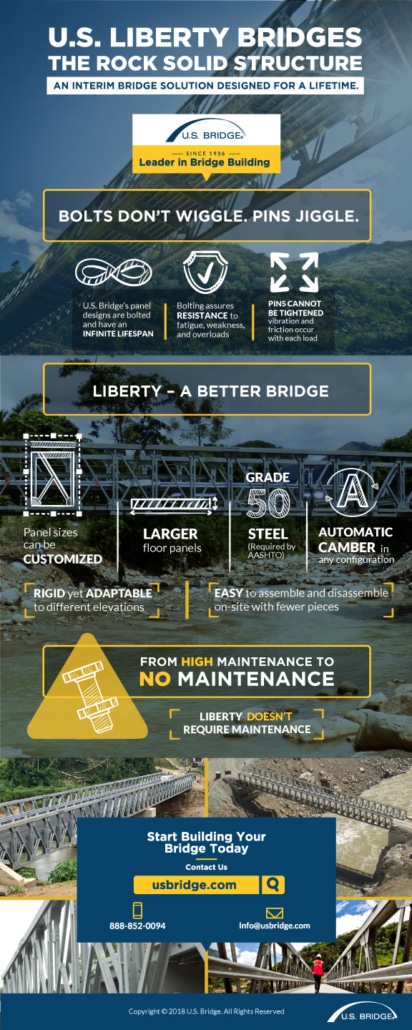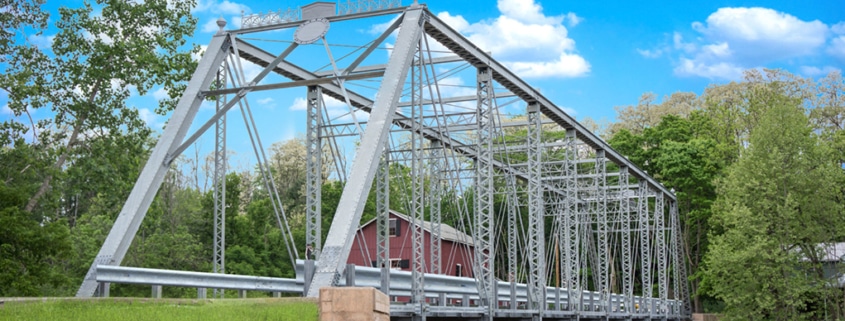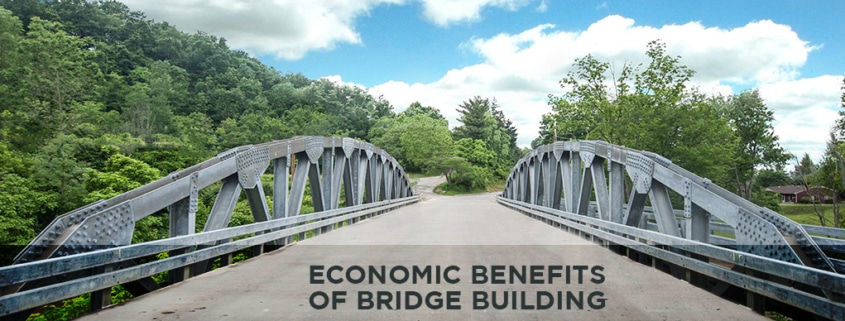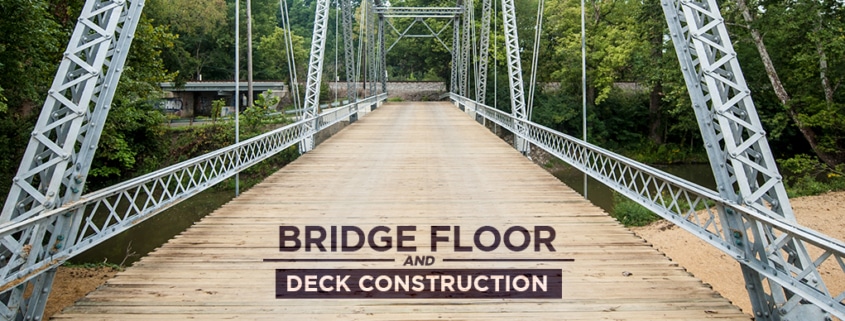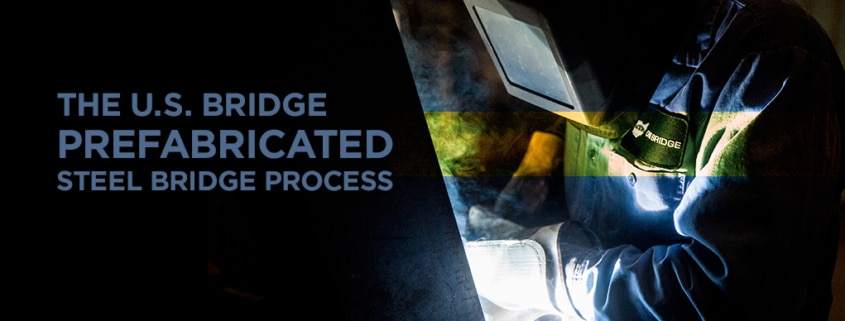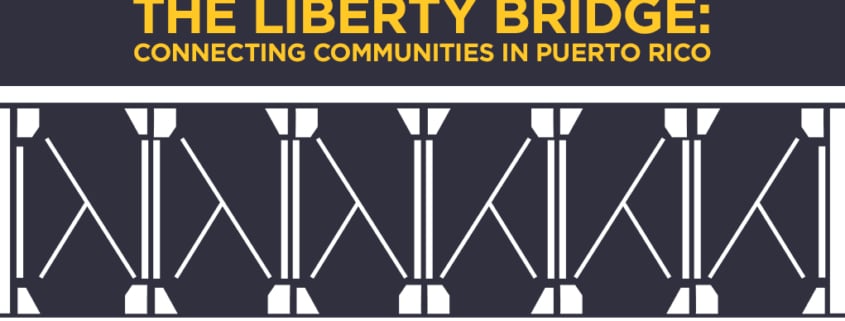Bridges are engineering marvels. Whether spanning great or small distances, steel bridges come in many different shapes, sizes and aesthetics. At U.S. Bridge, we have decades of bridge building experience and several types of bridges to choose from. With engineers experienced in design and construction, U.S. Bridge has produced some of the leading bridges in the country and around the world.
All of our bridges are custom-made to accomplish the task at hand. We listen and work to understand your project needs in order to ensure every detail of your bridge gets the attention it deserves. Below is an overview of various types of bridges that U.S. Bridge offers.
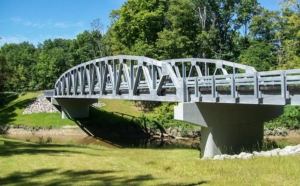
Cambridge Bridges
The Cambridge bridge is a Warren Truss girder bridge with a camelback design and beautiful geometry. The trusses each have a polygonal top chord, two diagonal members in each truss panel, and a vertical member at each interior bottom chord panel point. The Cambridge is an efficient use of steel, and is perfect for both rural and industrial settings.
Cambridge Flat Bridges
Similar to the Cambridge bridge design, this truss eliminates verticals at the top chord panel points. The Cambridge Flat bridge has a sturdy look and is ideal for all bridges over rail, water and roadway applications due to its shallow profile.
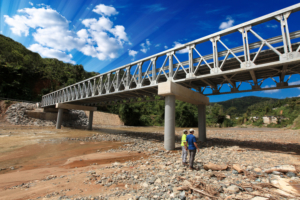
Liberty Bridges
The Liberty Bridge design is more adaptable than any other. These bridges are designed to be containerized and assembled into modules to make it easy to construct. The Liberty is perfect for easy and temporary installations, as it offers more flexibility than other bridge types. However, it’s also a preferred option for permanent installations.
When Hurricane Maria devastated Puerto Rico in 2017, U.S. Bridge provided five Liberty bridges to reconnect communities that were affected by the storm. Of all our types of bridges, our Liberty design is the best for emergency situations due to its ability to be quickly constructed.
Seneca Bridges
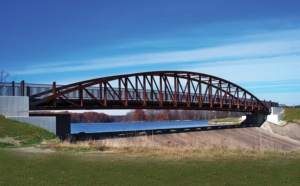 This Pratt Truss girder steel bridge is formed by creating an arch of its top curve. The Seneca design has vertical members at every panel point which shrinks the floor beams and minimizes or eliminates stringer beams. The steel design is lighter weight and more durable than similar concrete structures.
This Pratt Truss girder steel bridge is formed by creating an arch of its top curve. The Seneca design has vertical members at every panel point which shrinks the floor beams and minimizes or eliminates stringer beams. The steel design is lighter weight and more durable than similar concrete structures.
Additionally, innovative design can bring significant cost savings. Its all-bolted construction option allows for easy on-site construction. Lastly, this is a durable bridge that guarantees a life span of at least 100 years.
Thru Truss Bridges
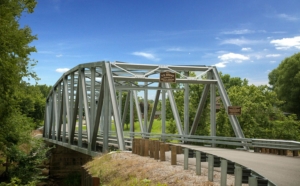 Our Thru Truss bridge design adds a pleasing aesthetic to your bridge structure. U.S. Bridge uses the term “thru truss” to describe high or box truss bridges. If your bridge needs to span up to 300 feet, this is the design for you. Thru Truss bridges are designed specifically for longer spanning bridges. Due to upper lateral support bracing bars, these bridges have a high-span capability. You can rely on the structural integrity of our bridge to meet your long-term needs.
Our Thru Truss bridge design adds a pleasing aesthetic to your bridge structure. U.S. Bridge uses the term “thru truss” to describe high or box truss bridges. If your bridge needs to span up to 300 feet, this is the design for you. Thru Truss bridges are designed specifically for longer spanning bridges. Due to upper lateral support bracing bars, these bridges have a high-span capability. You can rely on the structural integrity of our bridge to meet your long-term needs.
Thru Truss bridges reduces the need for intermediate piers. The kit will be shipped to the project site in lightweight manageable sections, though the pre-assembly is usually limited to attaching gusset plates to the chord members. Of our various types of bridges, this is the only design that can span up to 300 feet. Lastly, this bridge is available with asphalt, concrete or metal orthotropic deck with an anti-skid option.
Viking Bridges
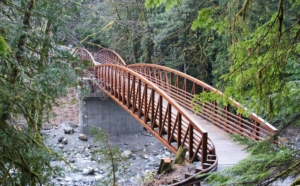 This gorgeous bridge design is a modified version of a bow-string arch style configured from a Pratt Truss using vertical end posts. It shares similarities with the Seneca design, with vertical members at every panel point, which minimizes or eliminates stringer beams.
This gorgeous bridge design is a modified version of a bow-string arch style configured from a Pratt Truss using vertical end posts. It shares similarities with the Seneca design, with vertical members at every panel point, which minimizes or eliminates stringer beams.
Depending on your needs, our independent and truss-mounted vehicular guardrail options allow you to attach the railing system to various sections of the superstructure. This bridge has the ability to span short or long distances to bring solutions for pedestrians, cyclists and cars.
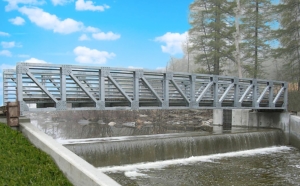
Voyager Bridges
This depth Pratt Truss style bridge is perfect for driveways or other areas where light vehicle traffic is expected. This bridge style is configured using parallel chord members and vertical end posts. The Voyager design offers a broad range of distinct designs that are aesthetically pleasing and functional.
Cortez Bridges
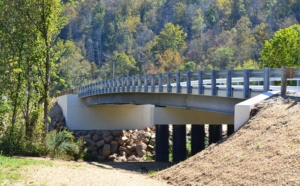 The Cortez is perfect for short spans, but is very adaptable and versatile. The Cortez design is a simple span beam bridge that supports a concrete deck slab and stay-in-place forms. Also, it can be designed with a bridge plank and asphalt system. When members weight and dead loads are a concern, U.S. Bridge can help create solutions with prestressed concrete alternatives.
The Cortez is perfect for short spans, but is very adaptable and versatile. The Cortez design is a simple span beam bridge that supports a concrete deck slab and stay-in-place forms. Also, it can be designed with a bridge plank and asphalt system. When members weight and dead loads are a concern, U.S. Bridge can help create solutions with prestressed concrete alternatives.
The Cortez design is easy to install without specialized equipment, as it’s available in custom lengths up to 80 feet. Like many of our bridges, you’ll have several finishes available. Lastly, our high-quality steel constructions are extremely durable and guarantee minimal to no maintenance.
Experts in Steel Bridges
U.S. Bridge has completed more than 10,000 bridge projects, and has experience working in more than 50 countries. Our team designs and builds steel bridge types of many different styles and designs, including those listed above. All of our bridges designs are custom made for our customers. We work directly with our customers during the entire process to find the best fit — manufacturers and distributors not required. Our family-owned business has been running and building strong for more than 80 years. Therefore, at U.S. Bridge, we take tremendous pride in our work.
To discover what type of steel bridge might best suit your needs, contact us today for a free assessment and quote. We look forward to designing and building your next bridge.

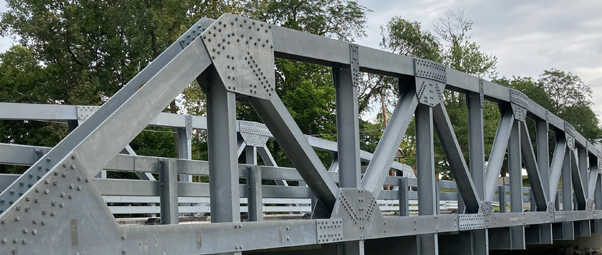
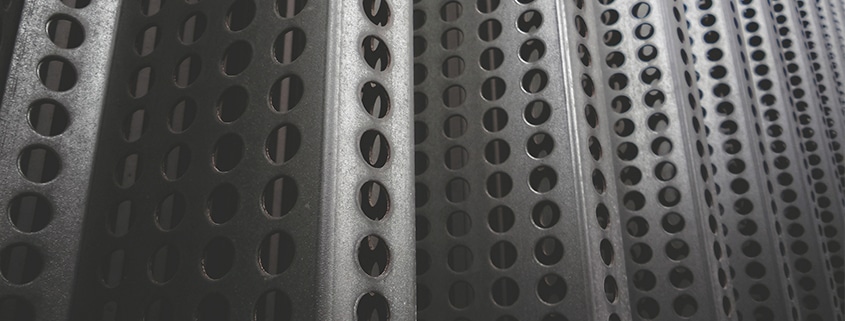
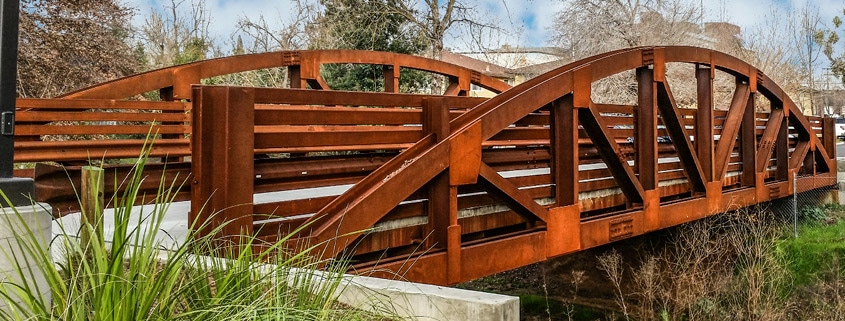
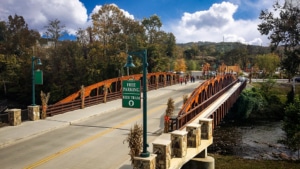
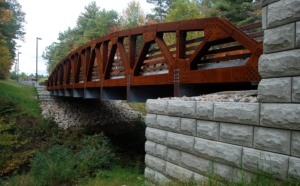
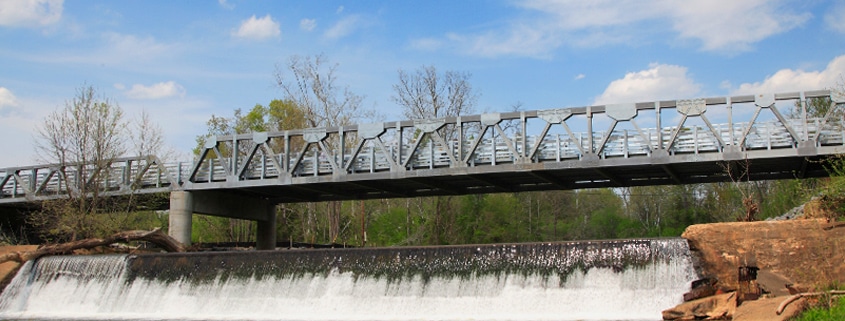
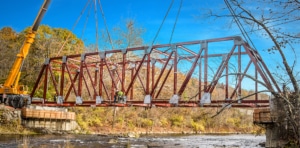

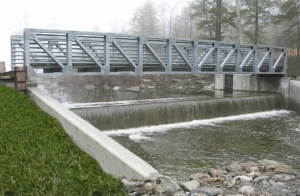
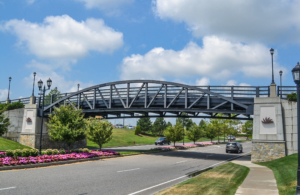
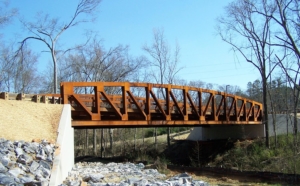
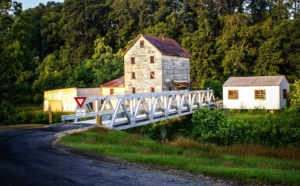
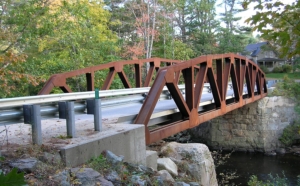
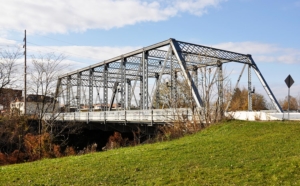
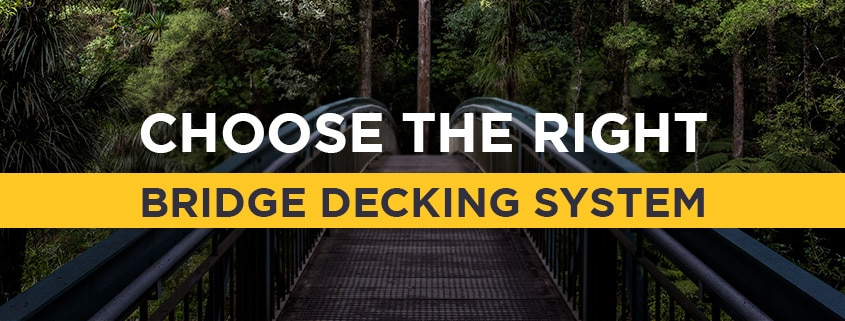
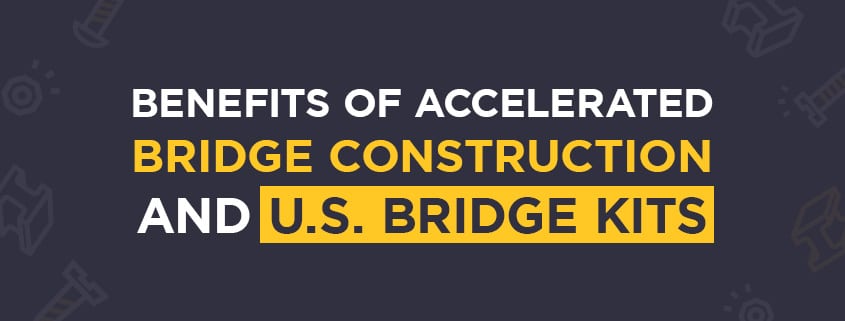
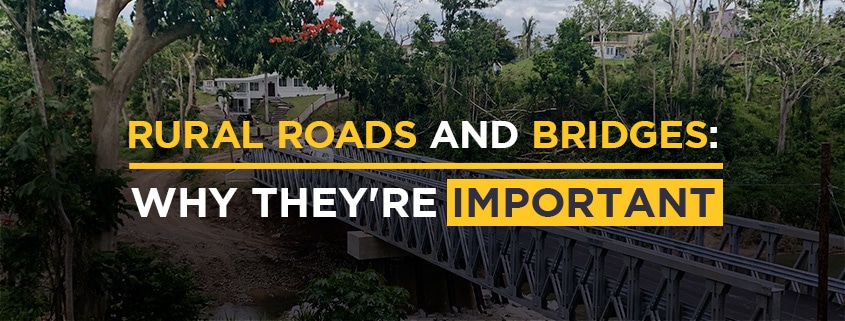
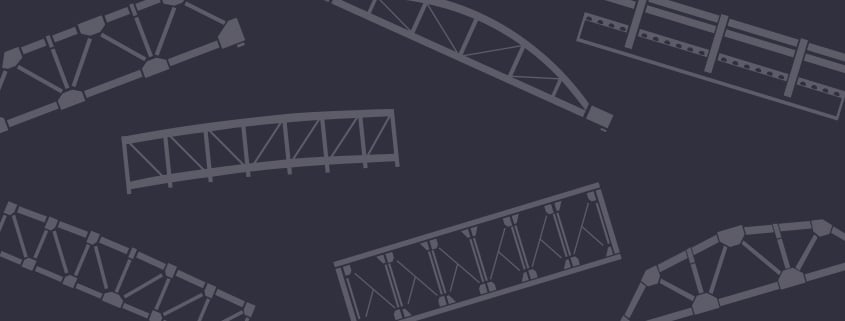

 This Pratt Truss girder steel bridge is formed by creating an arch of its top curve. The
This Pratt Truss girder steel bridge is formed by creating an arch of its top curve. The  Our
Our  This gorgeous bridge design is a modified version of a
This gorgeous bridge design is a modified version of a 
 The Cortez is perfect for short spans, but is very adaptable and versatile.
The Cortez is perfect for short spans, but is very adaptable and versatile. 